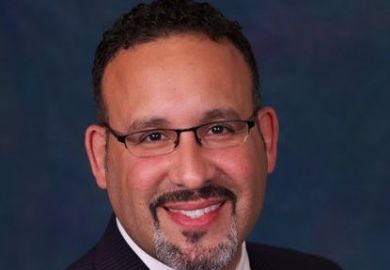The Bill & Melinda Gates Foundation is throwing its weight into the job of college assessment, inaugurating a value measurement system that identifies 650 US institutions that economically fail their students.
The Gates Foundation, working with the Institute for Higher Education Policy (IHEP), plans its tool to bolster existing federal and state efforts, and dramatically improve the usefulness of such information to students.
The effort marks a commitment by the world’s largest private foundation to take the growing accumulation of computerised data that relate to college performance and meaningfully put the information in the hands of students who need it.
“This is the beginning of a landslide of this kind of information that’s been building for a decade,” said Anthony Carnevale, a research professor of public policy at Georgetown University and a partner in the effort.
One of the most important repercussions of the work, Gates officials said, should be a far stronger recognition – by institution and programme – of the racial and gender inequities perpetuated or amplified by higher education.
Gates hopes its work will help students and others understand not just the value provided by colleges and their programmes, but “the value for whom”, said Patrick Methvin, the foundation’s director of post-secondary success.
So far, the major efforts in value assessment have been by the federal government, with its College Scorecard, and by several states, led by Texas, that have worked to connect data from employment records and from their public campuses to grade institutions and their programmes.
But such governmental efforts, for various reasons, have had trouble getting converted into formats useful to students and other parties, including institutions, said Professor Carnevale, director of Georgetown’s Center on Education and the Workforce.
Part of that problem, not directly solved by the new Gates-IHEP effort, was the poor state of advising services for students considering college, Professor Carnevale said. Gates, however, with some $50 billion (£35 billion) in assets, has the power to find ways to deliver its findings to the broad public, he said.
“This is the bravest thing they’ve done,” he said of Gates. “They’re basically deciding whether colleges are worth it or not.”
In IHEP, Gates has a partner with deep political connections. Former presidents of the higher education thinktank include Michelle Asha Cooper, now deputy assistant secretary for higher education programmes in the Biden administration, and Jamie Merisotis, now president of Lumina Foundation, another top higher education funder.
Among the initial set of studies the Gates-IHEP team issued is one that identified 650 institutions – including the majority of for-profit operations – where earnings for their students 10 years after first enrolment do not exceed the average earnings of high school students plus the net cost of college attendance. The team plans to identify those institutions by name later this year when it releases the data tool.
Another analysis, by the Georgetown team, shows the US loses $956 billion every year due to its failure to ensure racial equality in access to education.
Gates previously spent much of its higher education efforts on improving college completion rates, said Allan Golston, the foundation’s US programme president.
But Gates now sees that completion alone is not a sufficient focus, given that white graduates still accumulate eight times the wealth of black students, reflecting a range of disparities all along the educational pathway, Mr Golston said.
Understanding and ending that imbalance “should be the next great ambition for the higher education system in our country”, he said.
Gates and IHEP organised the bulk of their work on the college assessment tool over the past two years through an expert group it created, called the Commission on the Value of Postsecondary Education.
Its members included Mildred García, president of the American Association of State Colleges and Universities. Dr García told the briefing that she anticipated the initiative helping people understand and resolve such problems as black college graduates earning 25 per cent less than white graduates with the same degree, and Latino graduates earning 39 per cent less.
“Our colleges and universities need this information, and they need to act on it now,” she said.
Register to continue
Why register?
- Registration is free and only takes a moment
- Once registered, you can read 3 articles a month
- Sign up for our newsletter
Subscribe
Or subscribe for unlimited access to:
- Unlimited access to news, views, insights & reviews
- Digital editions
- Digital access to THE’s university and college rankings analysis
Already registered or a current subscriber? Login








